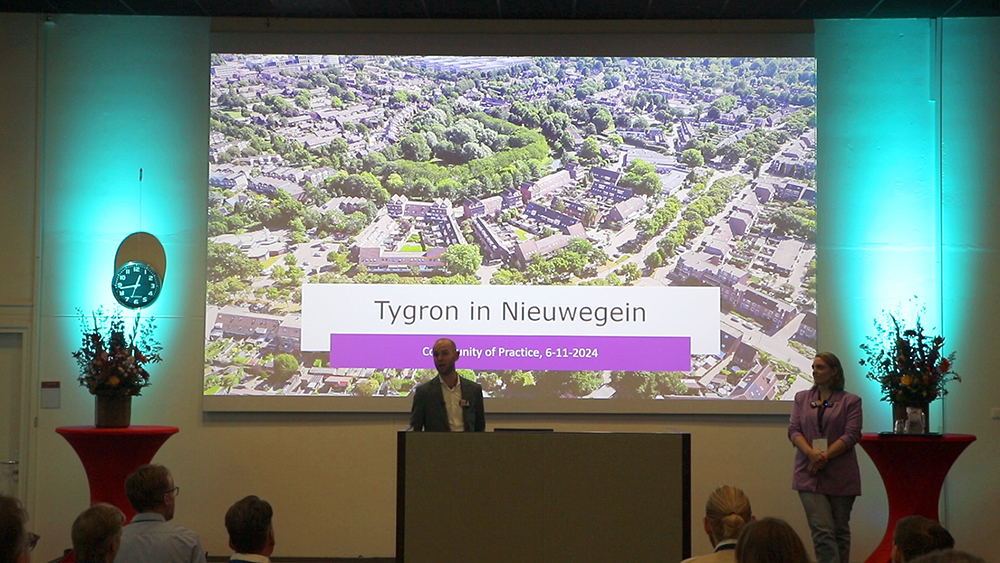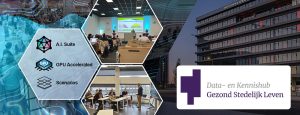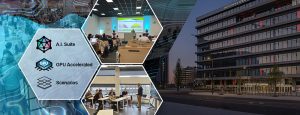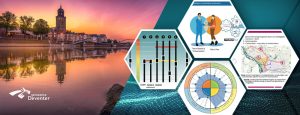During the Tygron Community of Practice, Anton Poelarends, strategist Space and Living and Esthy Meijer, junior project leader at the municipality of Nieuwegein, shared their insights on the role of a digital twin in realizing the municipal environmental vision. This digital technology offers Nieuwegein the opportunity to analyze complex policy issues and also helps with the integrated planning and monitoring of spatial developments in the city.
Anton Poelarends explains the background of Nieuwegein’s growth:
“Nieuwegein is a growth centre and must respond to the growing housing shortage. That is why we initially had plans for 3,000 new homes at 67 locations. Over time, that grew to 9,000 homes.”
However, the municipal council put a brake on this growth because of the question of whether Nieuwegein could handle this expansion. “The council literally said: stop, mark time,” says Poelarends.
This gave rise to the need for a digital twin to provide insight into the effect of growth on the city. The digital model visualises spatial projects and can combine this with policy indicators to provide an integrated overview.
Poelarends: “We conducted the research ‘Grip on the growth of the city’ and identified four main themes: demography and housing, health, sustainability, safety and liveability.”
Together with 90 sub-factors, these themes form the basis for the digital twin.


Critical Success Factors
One of the most important pillars for using the digital twin are the five critical success factors that each new project must contribute to. Poelarends explains:
“Spatial planning and design must contribute to a liveable and safe city, facilities must grow, investments must be made in qualitative greening, walking, cycling and public transport are central and we must work in an area-oriented and integrated manner.”
The score that new projects achieve on these success factors provides insight into the liveability and sustainability in the future. But existing neighbourhoods are also measured against the same yardstick.
“Every year we want to put the city of Nieuwegein through the system to see how we are doing on the five critical success factors and report this back to the council annually.”
Nieuwegein aims to move from isolated project development to a more coherent approach.
“Where we used to be very busy with plot development, we now want to look at it more broadly,” Esthy Meijer explains.
An example of this is the view of greenery. Meijer shows how this can be made clear:
“In the model, we can see from every facade whether there is a view of greenery. If that line is green, there is actually a view of greenery, but that is not the case on the red areas in the city centre.”
This information helps Nieuwegein to invest more specifically in greening and to create a more liveable city.

Efficient project development
Using the digital twin also brings challenges.
“It’s hard to estimate what the critical values are,” Meijer notes. “Some indicators go up and others go down, it’s hard to determine which are more important.”
She emphasizes the importance of both data and human expertise in the decision-making process:
“How does Tygron relate to the overall consideration? If Tygron says one thing, but experts have another idea, what do we base our decisions on?”
One of the main goals is to make project development more efficient. Meijer explains:
“We hope to be able to implement projects faster, with less external investigations because Tygron can provide a lot of data.”
This means a potential time saving and faster implementation, which is beneficial for the pressure on housing construction in the region.
The municipality of Nieuwegein is at the beginning of an innovative integration of digital technology in their spatial policy. From January, an employee will be trained internally to manage the Tygron model and in the spring of 2025, Nieuwegein hopes to present the first results of the digital twin to the council. Meijer concludes:
“We hope that the entire organization will be as enthusiastic as we are, so that we can use Tygron widely.”
You can watch the entire presentation below: (From 9:03)
Check out the entire Community of Practice 2024 Report (in Dutch) below:







